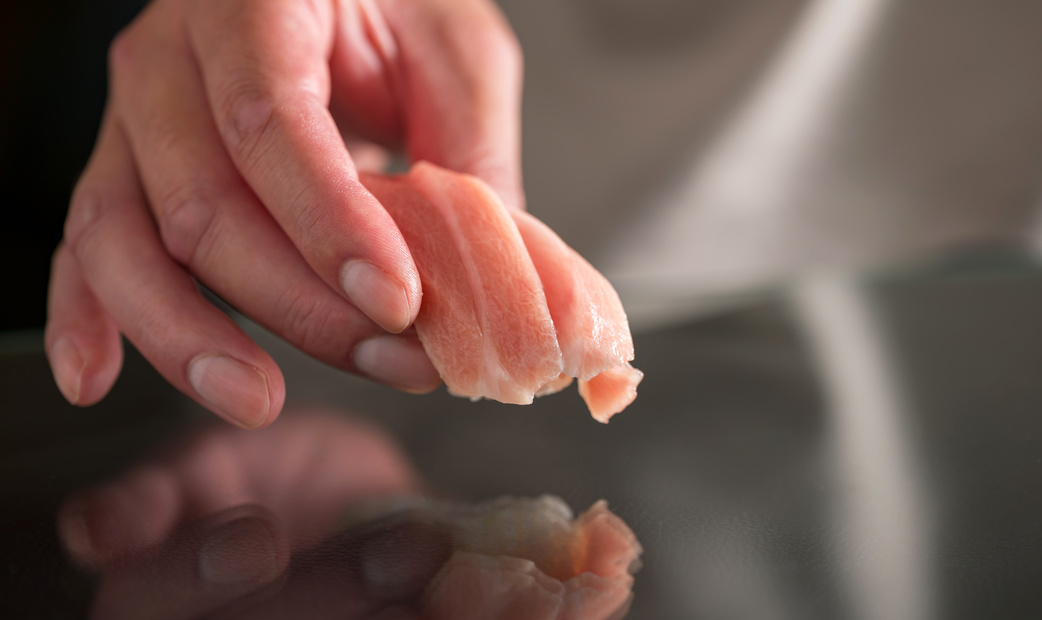.jpeg)
What is Nigiri-Sushi? The Charm of Nigiri-Sushi in Japan and Recommended Restaurants
The OMAKASE editorial team, an official partner of Michelin, will introduce what nigiri-sushi is and delicious nigiri-sushi restaurants in Tokyo.
- What is Nigiri?
- The history of Nigiri
- A comparison between Nigiri and Sashimi
- A comparison between nigiri sushi and maki sushi.
- What is Edomae-sushi?
- What is Kansai-sushi?
- A Comparison Between Edo-mae Sushi and Kansai Sushi
- Main Fish Used in Nigiri Sushi
- How to Make Nigiri
- Michelin-Recommended Sushi Restaurants in Japan You Can Book
What is Nigiri?
Nigiri-sushi is one of the types of Japanese sushi, and when people in Japan think of "sushi," many imagine nigiri-sushi. Nigiri-sushi consists of a bite-sized portion of vinegared rice, called "shari," topped with an ingredient known as "neta," all shaped by hand. The term "nigiri" comes from the action of "squeezing" or "pressing" the sushi into shape. While seafood is the most common neta, ingredients like vegetables, meat, or tamagoyaki (a sweet, layered omelet made with sugar and dashi) are also used.
The history of Nigiri
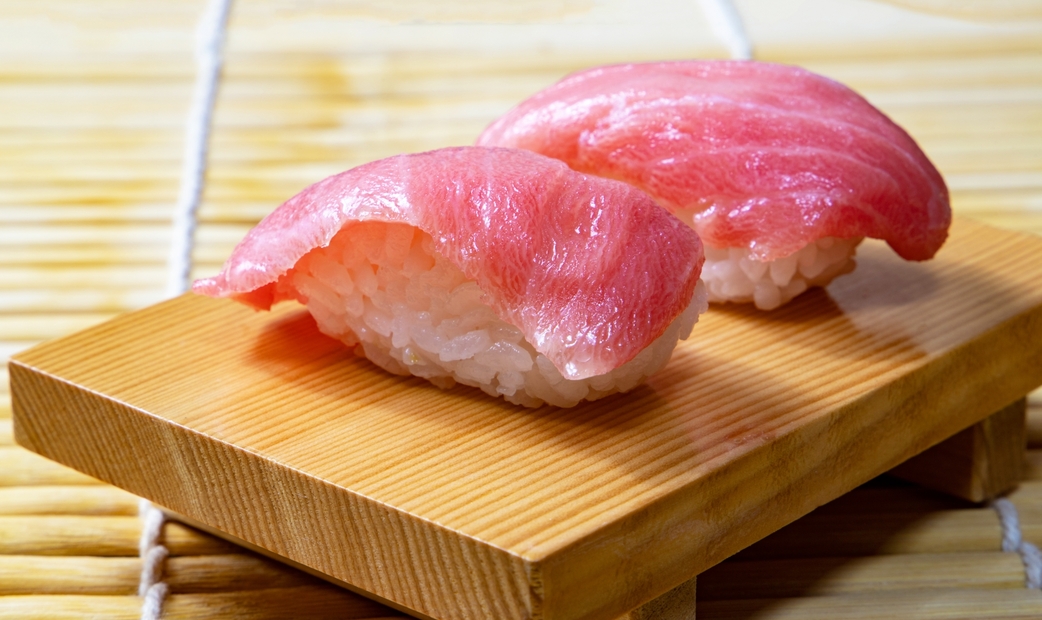
Nigiri-sushi emerged over 200 years ago in Edo (now Tokyo). At that time, refrigeration and transportation technologies were underdeveloped, so fish would spoil quickly. To improve preservation, fish was often boiled, simmered, or marinated in vinegar. Nigiri-sushi was created as a convenient way to enjoy these preserved seafood toppings. Back then, nigiri sushi was about the size of a fist, so it was typically cut into smaller pieces before eating.
A comparison between Nigiri and Sashimi
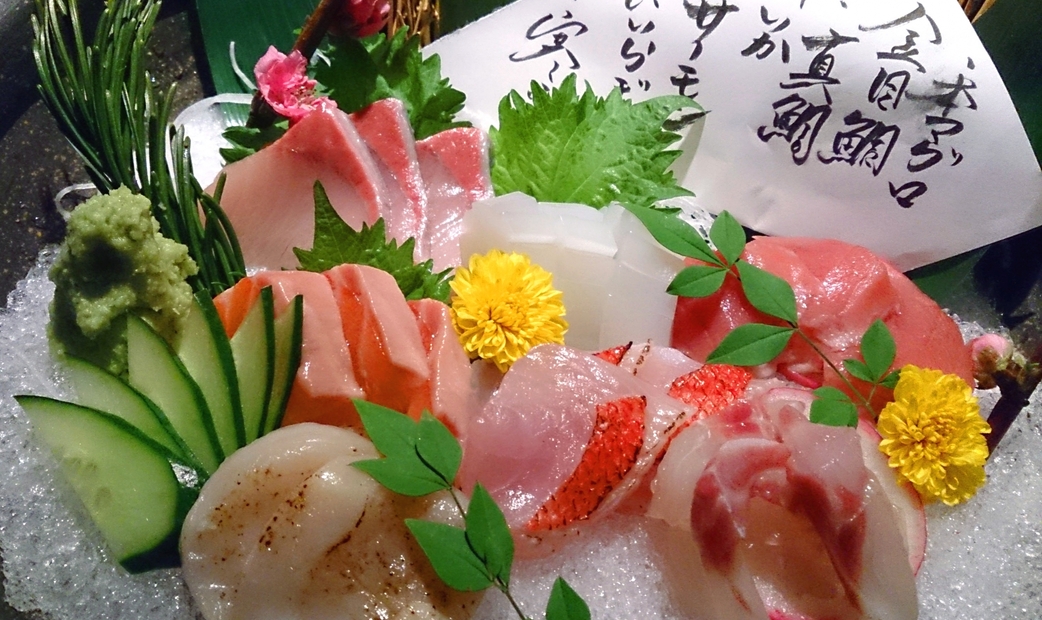
Many foreigners get confused nigiri sushi with sashimi. Sashimi is a dish made by slicing raw fish (in Japan, there is also sashimi of raw meat) and eating it as it is with soy sauce, wasabi, salt, etc. Unlike nigiri sushi, it does not come with vinegared rice. Also, while sashimi is basically eaten with chopsticks, nigiri sushi can be eaten with either hands or chopsticks.
A comparison between nigiri sushi and maki sushi.
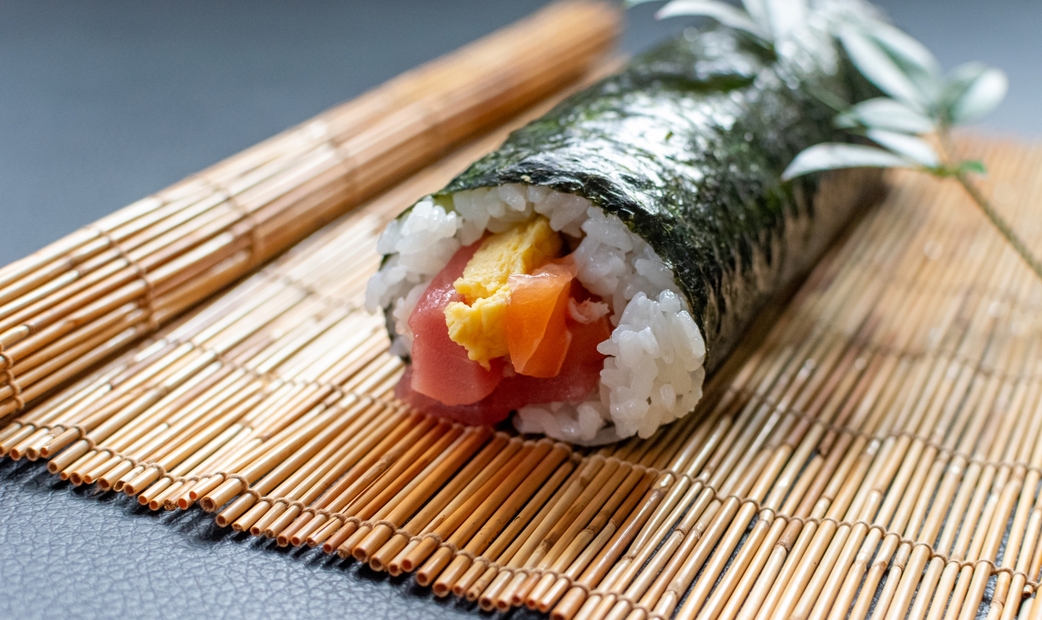
Both nigiri-sushi and maki-sushi are types of sushi, but they are prepared differently. Maki-sushi is made by spreading a thin layer of vinegared rice on nori (seaweed), adding toppings, and then rolling it up. Maki-sushi is typically served cut into pieces, while nigiri-sushi is designed to be eaten in one bite. Therefore, cutting nigiri-sushi is considered bad manners.
What is Edomae-sushi?
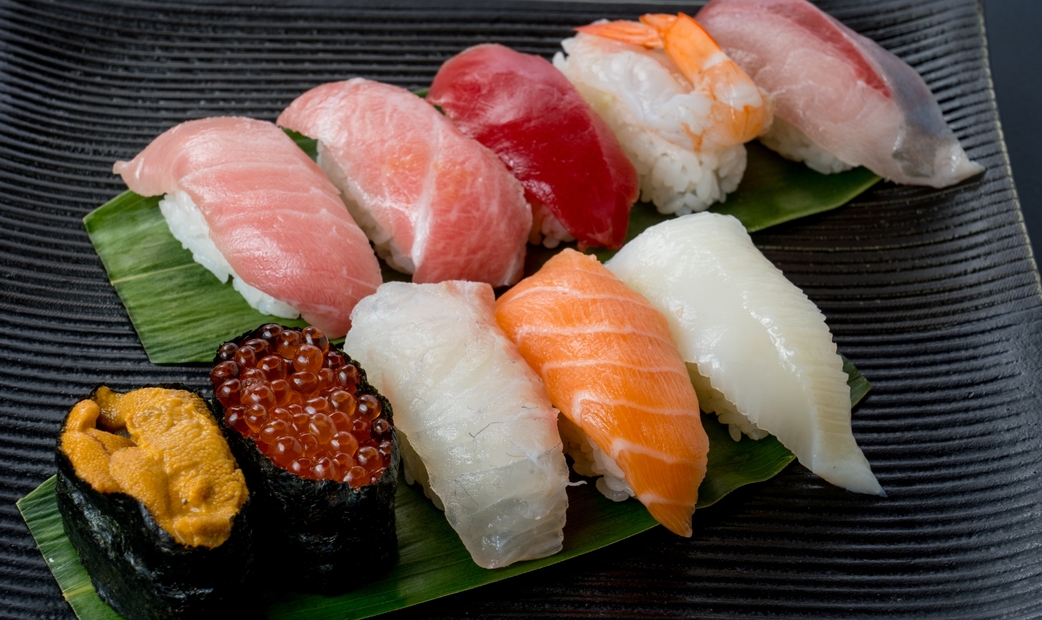
Edomae-sushi is a style of sushi that originated during the Edo period (late 1700s) as a way to preserve fish caught in Tokyo Bay. With the development of seafood preservation techniques, Edomae-sushi was designed to be easily enjoyed at food stalls, marking the beginning of this iconic sushi style.
What is Kansai-sushi?
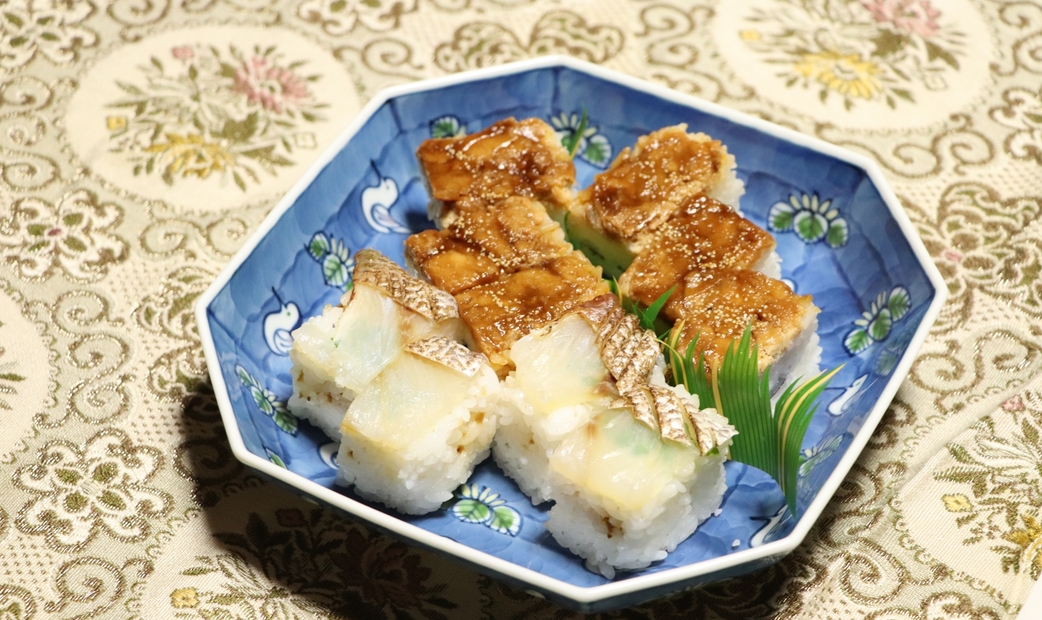
Kansai-sushi today primarily features sushi made with fresh, locally caught fish. However, during the Edo period, it was known for styles like bo-sushi (stick sushi), Oshizushi (pressed sushi), and battera sushi (pressed sushi in Osaka), which focused on preservation rather than freshness. These styles differ significantly from Edomae-sushi. Kyozushi, another type of Kansai-sushi, is also known for its emphasis on preservation techniques.
A Comparison Between Edo-mae Sushi and Kansai Sushi
Differences in the Main Ingredients
While Edomae-sushi often focuses on tuna, Kansai-sushi tends to focus on white fish like sea bream (tai) and flounder (hirame). This difference stems from the availability of ingredients in each region. In Tokyo, tuna was easily accessible around Tokyo Bay, and preservation techniques like marinating (zuke) made it a staple in Edomae-sushi. In contrast, the Kansai region, with its proximity to the Seto Inland Sea, had an abundance of delicious white fish, which became a key feature of Kansai-sushi.
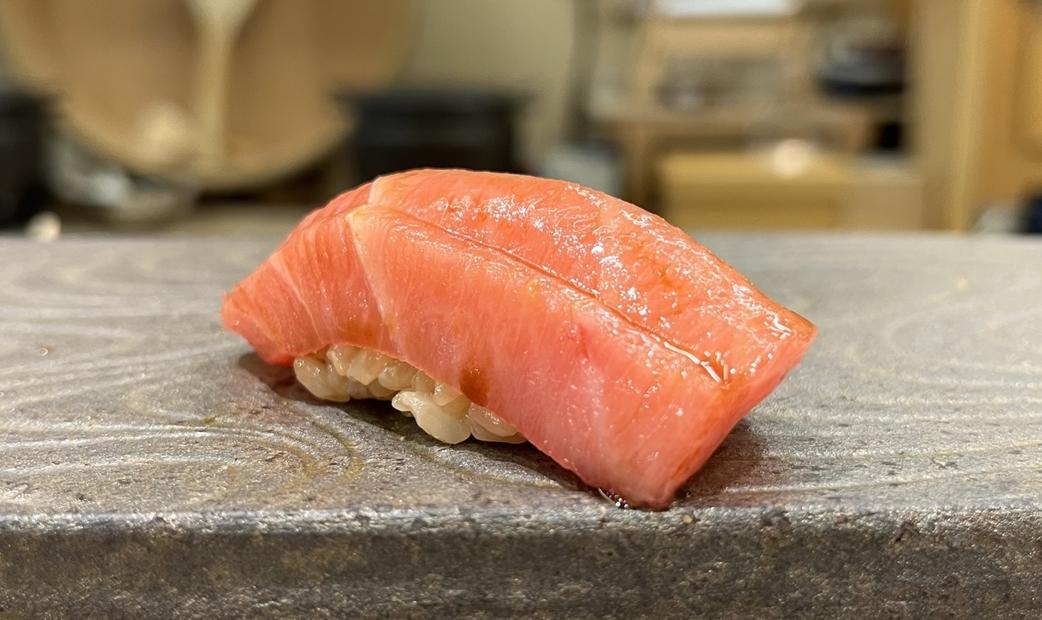
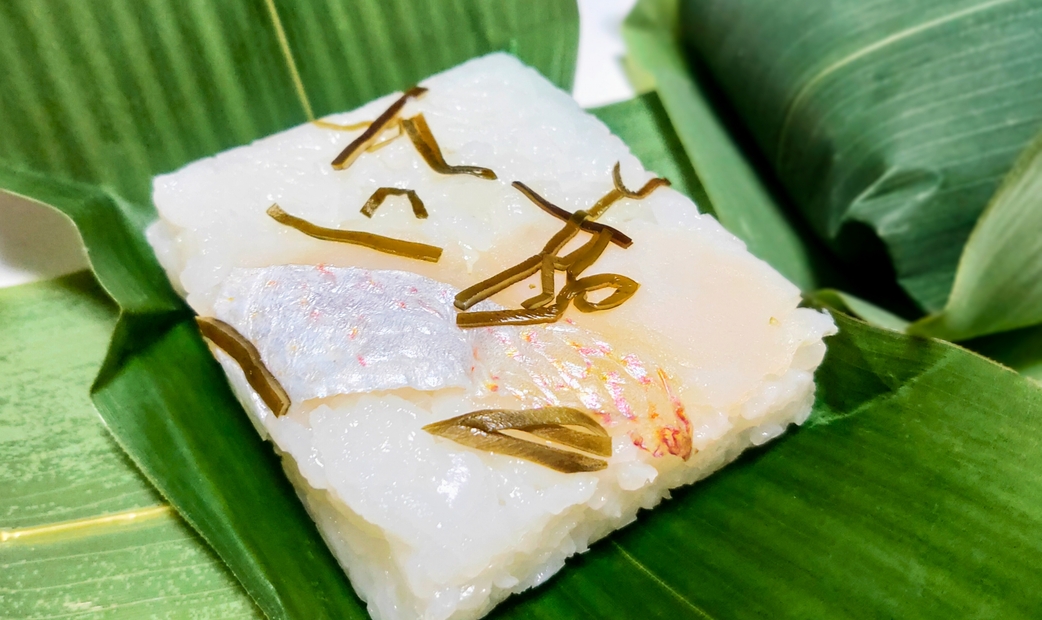
Aging and Freshness
While Edomae-sushi sometimes ages the neta to bring out its umami and stickiness, a major difference is that Kansai-sushi emphasizes freshness.
The Difference in Sushi Rice
In Kanto region, sushi rice is lightly seasoned with red vinegar to enhance the flavor of the ingredients. In contrast, Kansai-sushi rice is sweetened with sugar to improve preservation, which gives it a distinct sweetness. The sweet flavor of Kansai-sushi rice today is a remnant of the preservation techniques used in traditional Kansai-sushi.
The Difference Between Sushi in Japan and Sushi in America
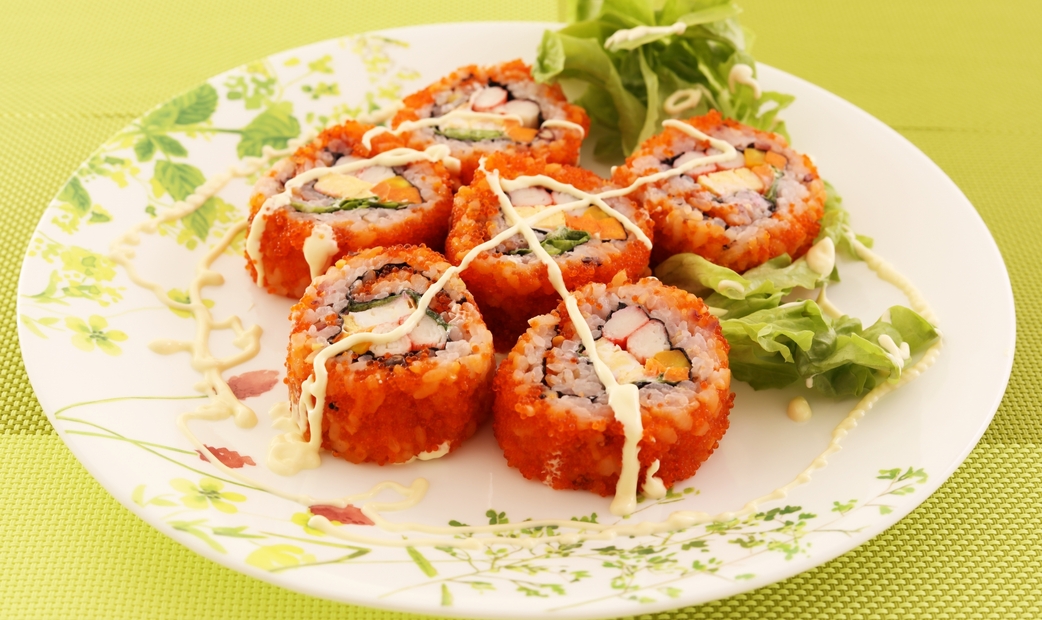
In the U.S., when people think of "sushi," many imagine maki-sushi. This is because maki-sushi is easy to make and doesn't require specialized skills. While maki-sushi is also served in Japan, when people in Japan refer to "sushi," they are usually talking about nigiri-sushi. In Japan, highly advanced techniques are required, to the extent that it takes at least 10 years of training to be able to make a single serving of nigiri-sushi.
Main Fish Used in Nigiri Sushi
In traditional nigiri-sushi, the toppings (neta) often uses local fish caught in the surrounding area. However, with advancements of refrigeration and transportation technology, high-quality seafood from distant areas is now also used in nigiri-sushi. Some restaurants that preserve the tradition of Edomae-sushi take pride in using only seafood caught in Tokyo Bay.
Maguro (Tuna)
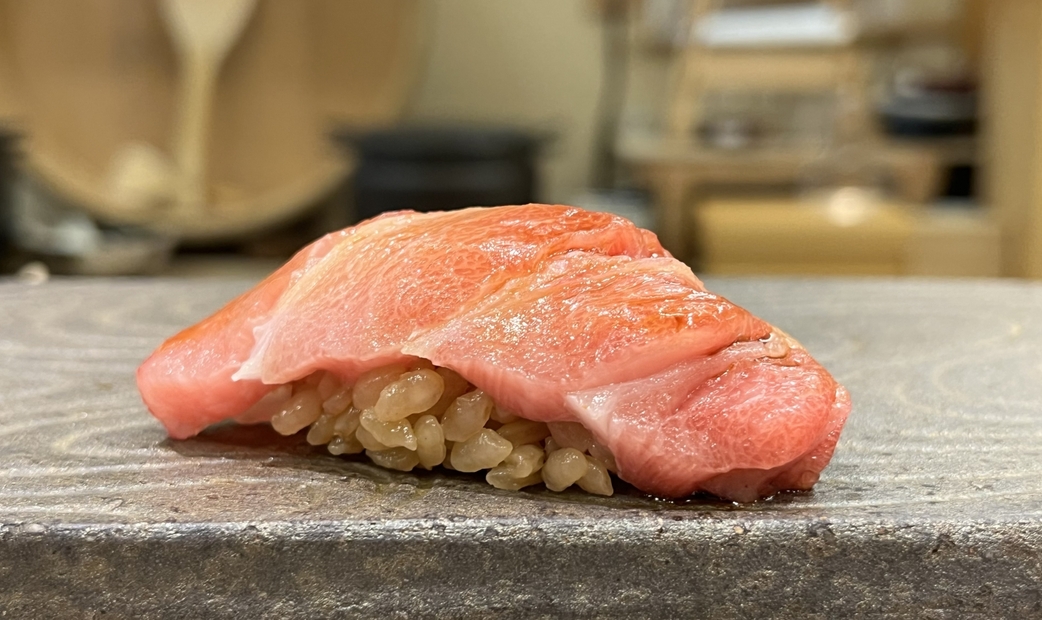
The flavor of tuna varies greatly depending on the cut, such as otoro (fatty tuna), akami (lean tuna), and negitoro (tuna with green onions). Each sushi restaurant has its own approach, and high-end establishments. Especially, some high-end restaurants place a strong emphasis on the quality of their tuna.
Hamachi (Young Yellowtail)
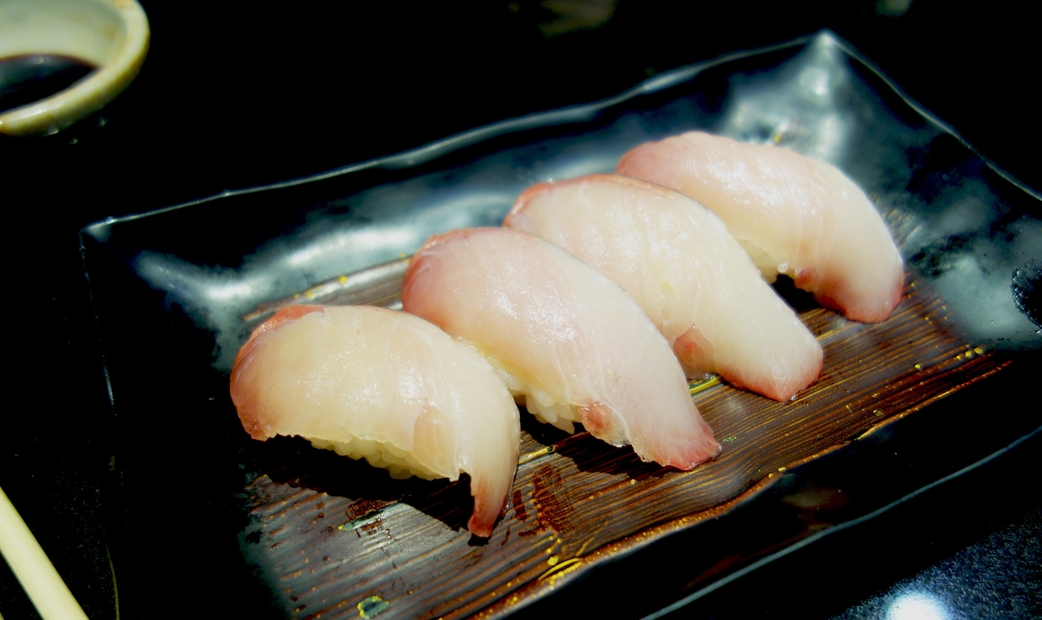
A popular topping (neta) both in Japan and the U.S. In Japan, it is commonly found at casual sushi restaurants, but it is rarely served at high-end establishments. However, premium wild-caught young yellowtail (hamachi), especially when in season, can sometimes be enjoyed at high-end sushi restaurants.
Salmon
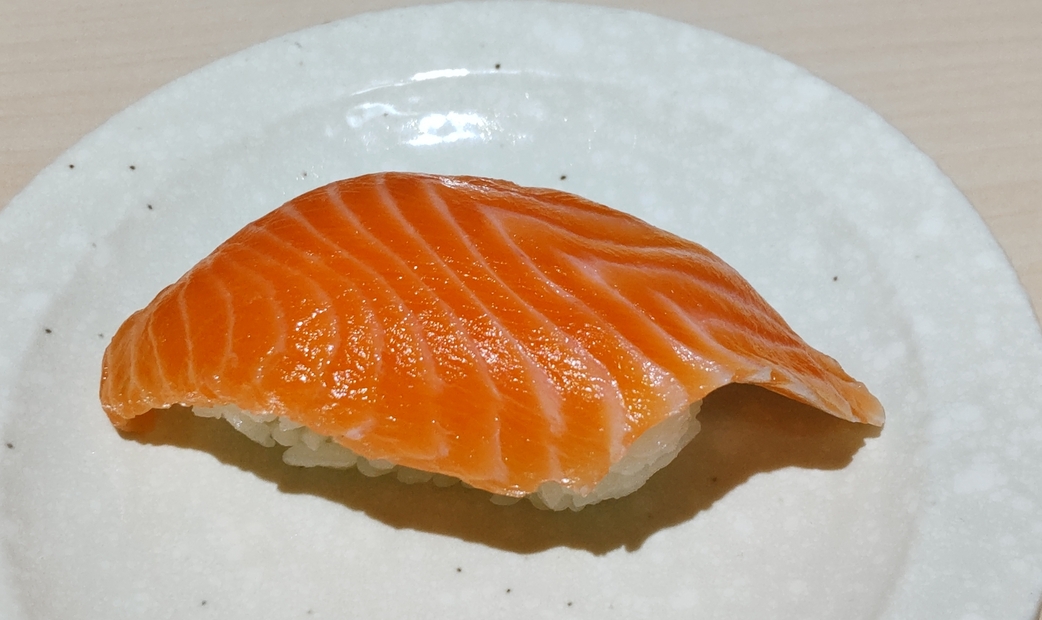
A popular sushi topping in both Japan and the U.S. In Japan, it is mainly served in casual sushi restaurants, but it is often not found in high-end sushi restaurants. On the other hand, salmon roe (ikura) is commonly offered even at luxury sushi restaurants.
Kohada (Gizzard Shad)
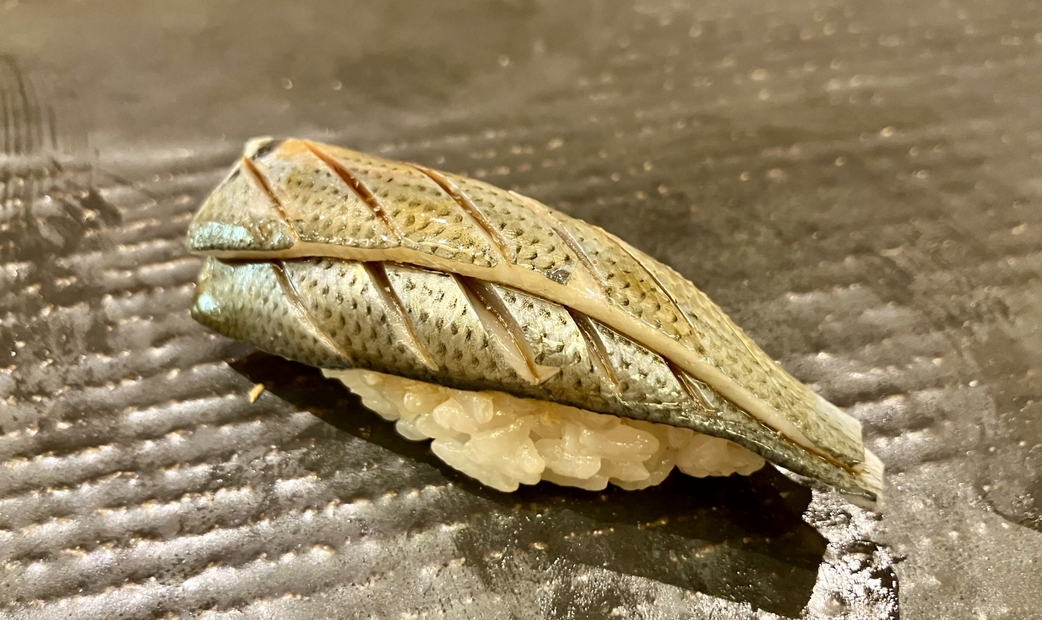
A representative topping of Edomae-sushi. It is made by marinating small fish in vinegar, offering a light and refreshing flavor. In the Edo period, it was said that "one must eat kohada to be considered a true sushi connoisseur," making it a traditional sushi topping.
Anago (Conger Eel)
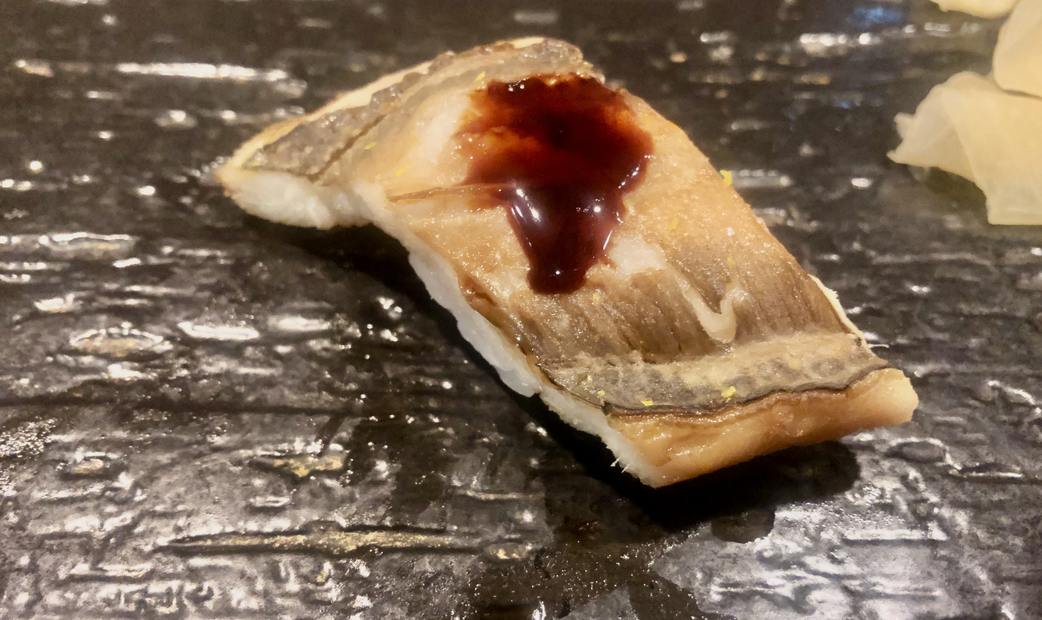
It is served as nigiri-sushi after being simmered in a sweet and savory sauce. Known for its soft, fluffy texture, it is often confused with eel in the U.S., but it is actually a completely different fish.
Unagi (Japanese freshwater eel)
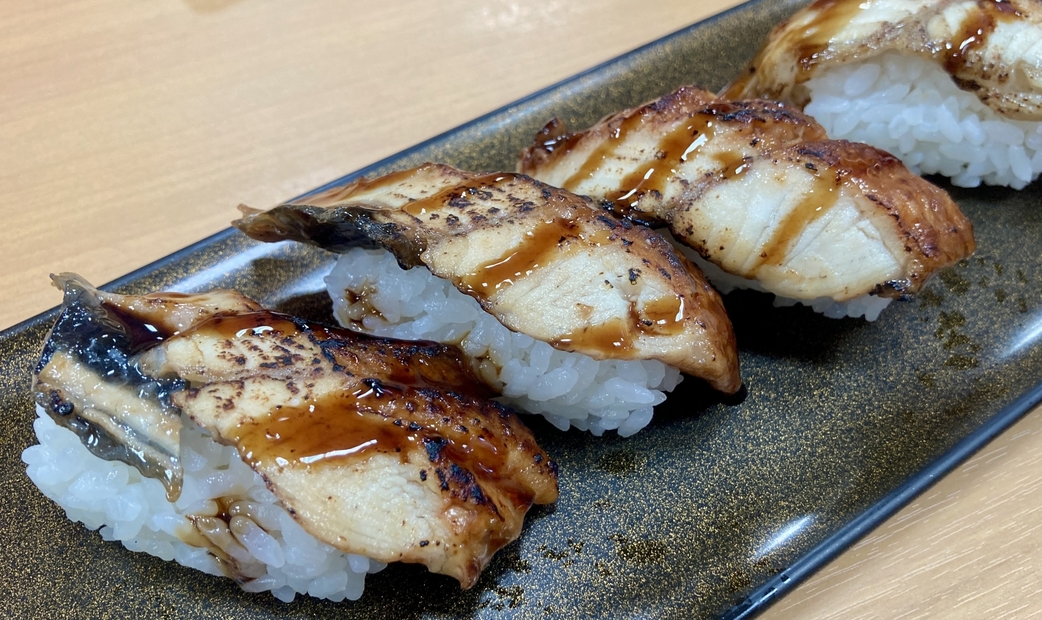
While it is a common topping for sushi in the U.S., japanese freshwater eel is not popular in Japan. However, in Kansai region, Japanese freshwater eel nigiri-sushi is sometimes served. It has a rich flavor due to its high fat content.
Ika (squid)
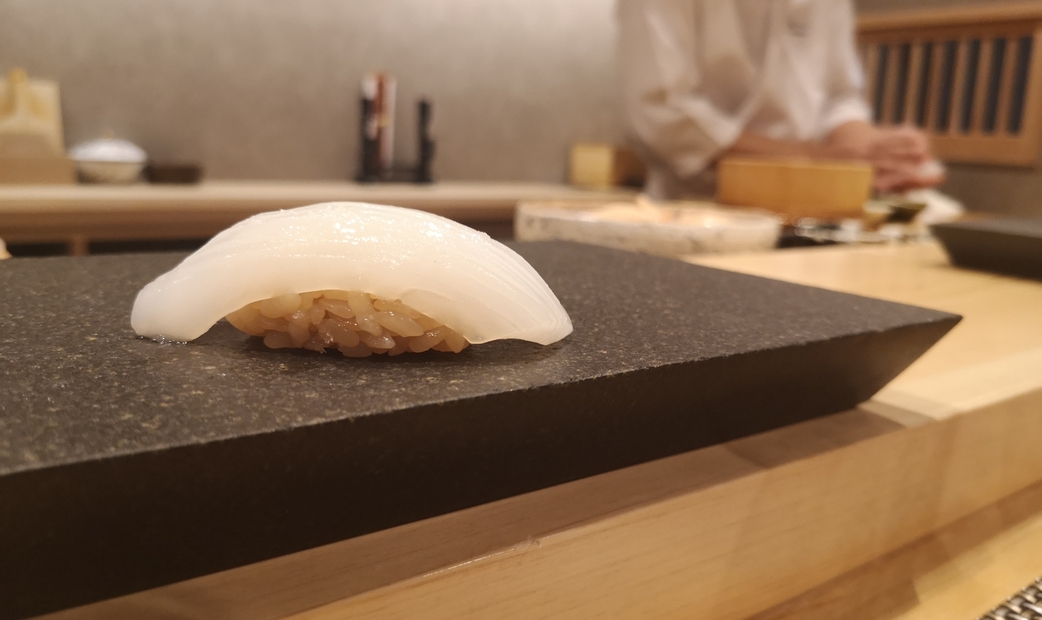
It is typically served raw as nigiri-sushi, but it can also be lightly seared or boiled. The tentacles (geso) are also used as a sushi topping.
Tako (octopus)
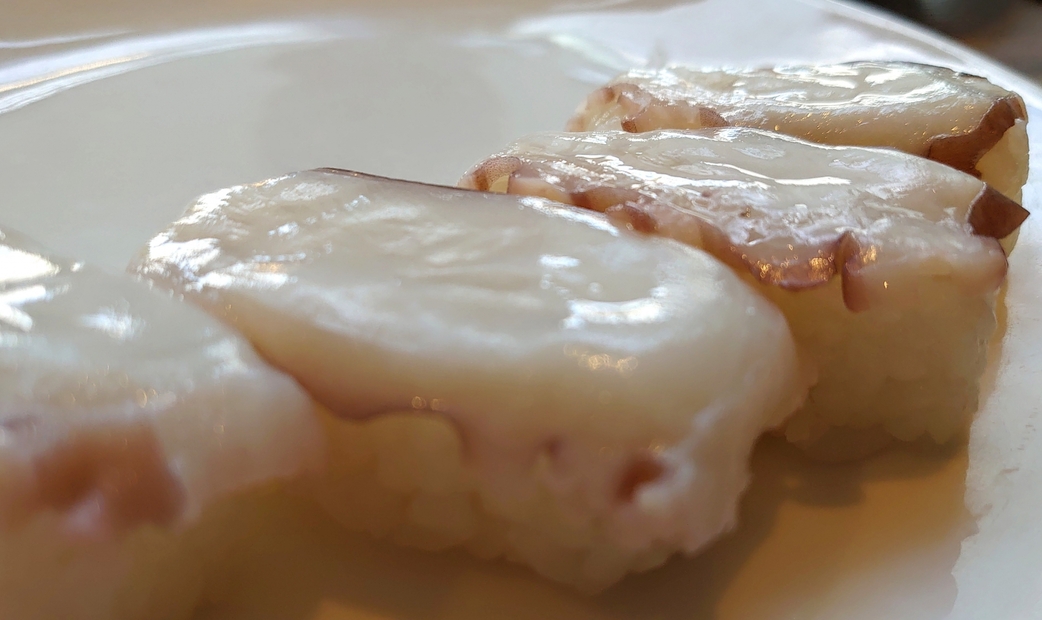
Boiling it is the most common way of preparation, but it can also be served raw. It has a refreshing taste and a firm texture.
Ebi (shrimp)
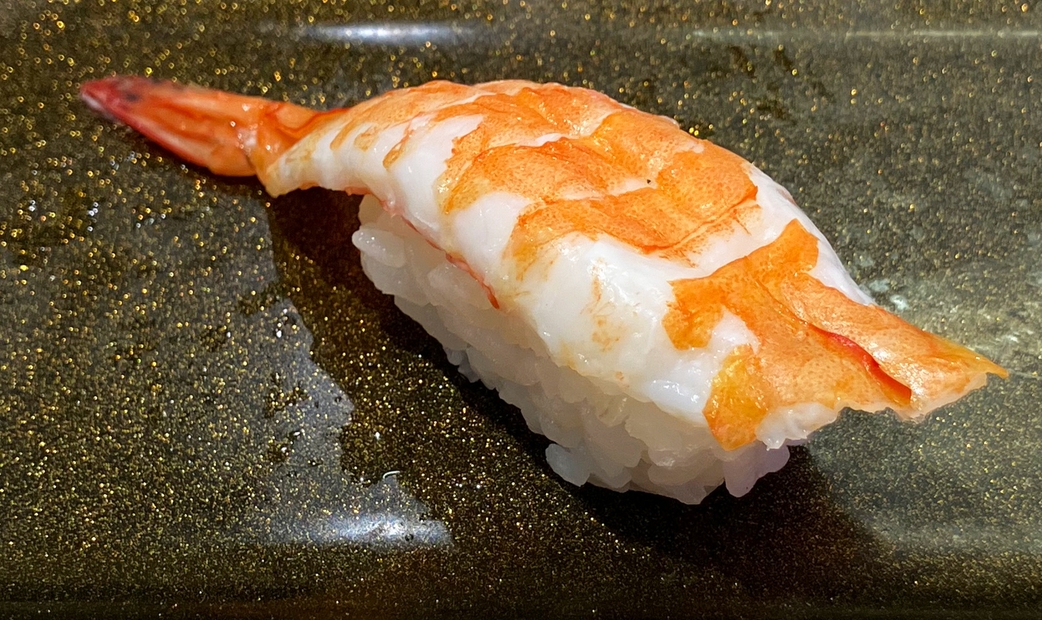
In Edomae-sushi, boiled tiger prawns (Kuruma Ebi) are traditionally used, but recently, raw shrimp has also become a popular option. It has a natural sweetness and a light, refreshing flavor.
Tai (Sea Bream)
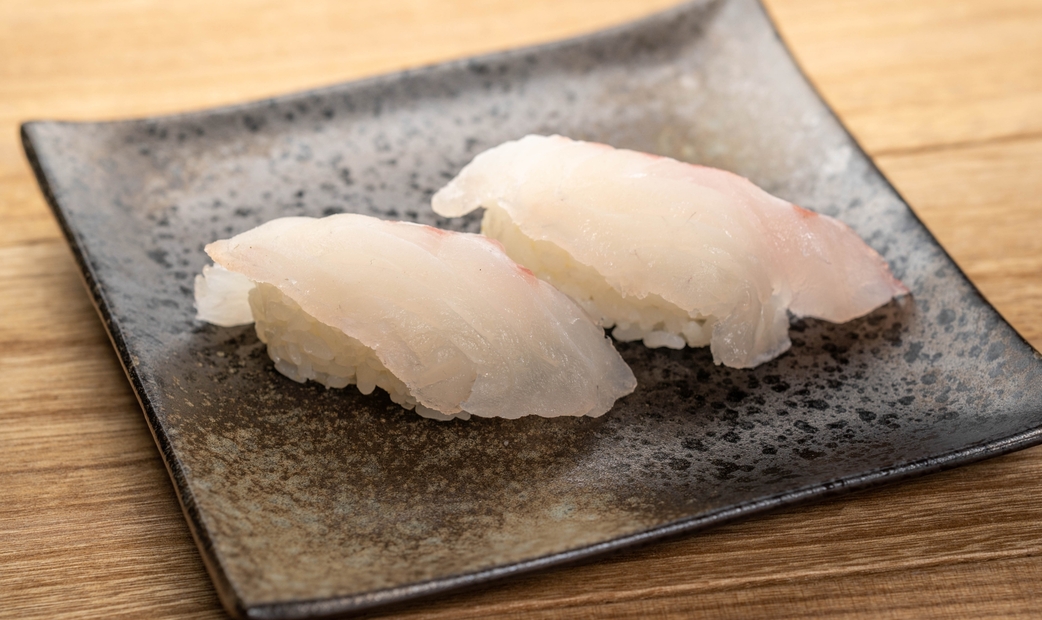
A commonly eaten white fish in Japan. It has a mild and delicate flavor, and the amount of fat varies depending on the season.
How to Make Nigiri
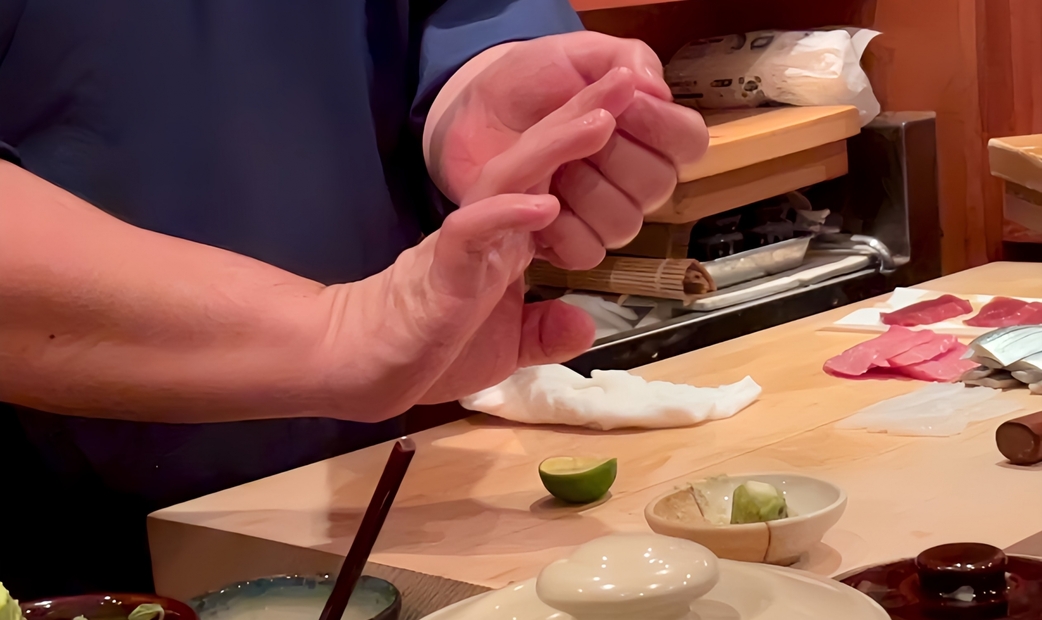.jpg)
Making Shari (sushi rice)
Add sushi vinegar (a mixture of vinegar, sugar, and salt) to freshly cooked rice, and mix it gently with a cutting motion. Let it cool down to an appropriate temperature (around body temperature).
Prepare the ingredients
Cut the fresh seafood into appropriate sizes (around 5mm to 1cm in thickness). Sometimes, the toppings are lightly salted or seasoned with soy sauce or nikiri sake (reduced-intensity soy sauce).
Prepare for Nigiri
Prepare a bowl of tezu (vinegared water) by adding a small amount of vinegar to water, and place some wasabi on a plate.
The procedure for making nigiri.
1. Wet your hands
It’s best to use "tezu," which is water with a little vinegar added.
2. Take a small amount of rice
Take a small amount of rice (about 15g) and gently shape it into a loose ball.
3. Apply wasabi
Apply a small amount of wasabi to the center of the topping.
4. Place the rice on top of the fish
gently press while shaping the rice.
5. Shape the Sushi
Gently shape it with your palm while lightly pressing with your fingertips.
6. Finalize the shape
Gently adjust the shape without losing its soft, fluffy form.
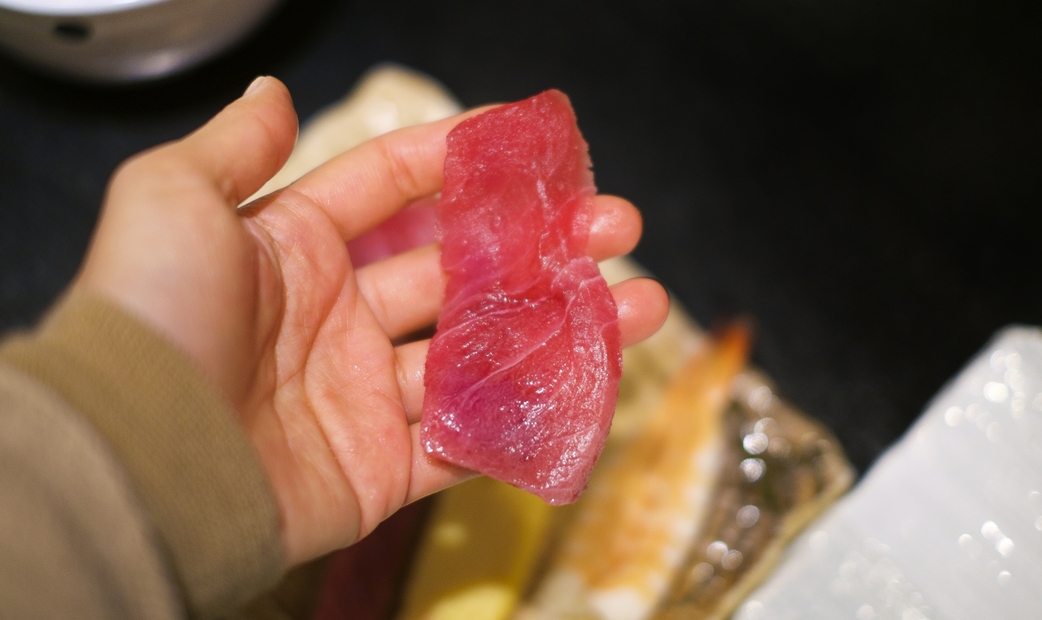
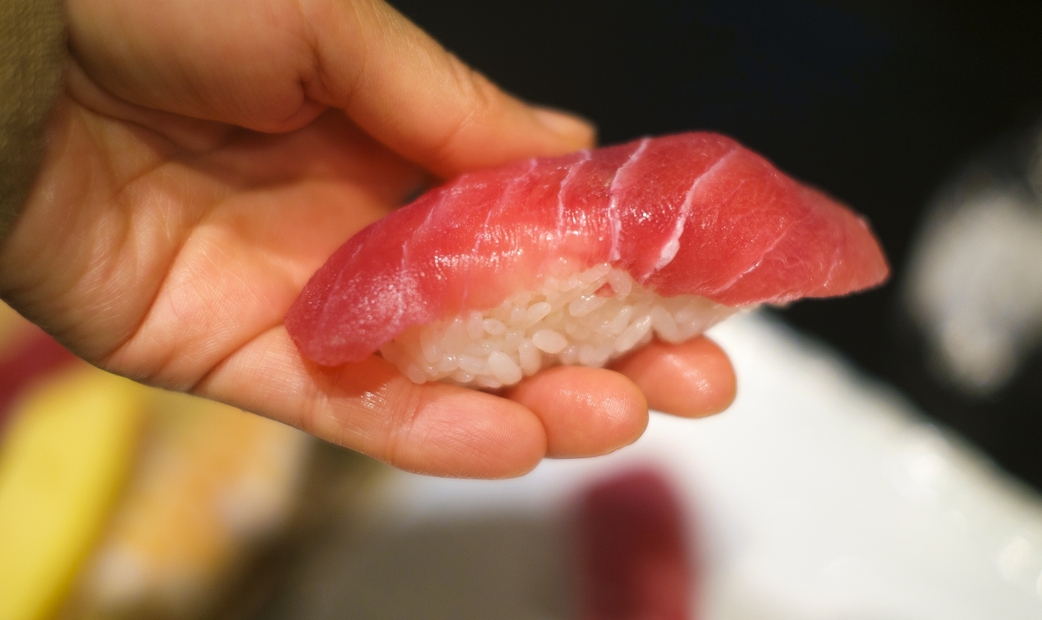
Finishing and Serving
・Plate the sushi and serve with soy sauce, pickled ginger, and wasabi on the side, according to your preference.
・Depending on the type of topping, the sushi may be lightly seared or brushed with sauce at the end.
Michelin-Recommended Sushi Restaurants in Japan You Can Book
Sushi Masashi (鮨 将司) / tokyo
This Michelin one-star restaurant is run by a chef who trained at the Ritz-Carlton and "Sushi Wakon." Known for its meticulous attention to the balance of temperature, texture, and fat in each dish, the course menu is a standout. Don’t miss their signature dish, "Tuna Sukiyaki".
- Operation hours
- Lunch: 12:00 PM -
Dinner: 5:30 PM - 8:00 PM - Regular holiday
- Wednesdays, Sundays, Public Holidays (Others, Irregular Holidays)
- Price range
-
Lunch: USD 272.48 - USD 311.41
Dinner: USD 272.48 - USD 311.41 - Address
- 7F, Gaien Icho no Mori, 2-9-9 Kita-Aoyama, Minato-ku, Tokyo
- Nearest station
- Gaienmae Station
- Directions from station
- 3 minutes walk from Gaienmae Station
- Payment methods
- Credit card available
- Seats
- Counter 10 Seats
Room 4 Seats - Awards
-
Michelin
-
Davide4.8Posted on :11/12/2025
-
Noah5.0Posted on :11/06/2025
-
Gook Chackis5.0Posted on :10/28/2025
Sushi (鮨 はやし) / kyoto
A Michelin one-star hidden sushi restaurant. The owner has experience in Switzerland and "Four Seasons Kyoto," and offers an omakase course using carefully selected ingredients from the Kansai region. Rare Swiss wines are also attractive.
- Operation hours
- Lunch: 12:00 PM - 2:00 PM
Dinner: 6:00 PM - 9:00 PM - Regular holiday
- Wednesdays, Thursdays
- Price range
-
Lunch: USD 155.7 - USD 241.34
Dinner: USD 241.34 - USD 442.34 - Address
- Grancosmo Gosho 101, 31-1, Omotecho, Kamigyo-ku, Kyoto-shi, Kyoto
- Nearest station
- Demachiyanagi Station
- Directions from station
- 6 minutes walk from Demachiyanagi Station
- Payment methods
- Cash, Credit card
- Seats
- 8 Seats
- Awards
-
Michelin

-
Pedro Hernández4.0Posted on :06/23/2025
-
Samantha5.0Posted on :05/08/2025
-
Willie Chung4.7Posted on :05/06/2025
Sushi (鮨 ほしやま) /osaka
A renowned Michelin one-star restaurant in Osaka that has held its star for over 10 years. The owner trained at "Tsukiji Sushisei Kyo" and "Sushi Matsumoto." Guests can enjoy classic Edomae-sushi while savoring Japanese sake served in Baccarat antique glasses.
- Operation hours
- Part 1: 5:30 PM or 6:00 PM (Check-out by 8:15 PM)
Part 2: 8:30 PM - Regular holiday
- Tuesdays
- Price range
- Dinner: USD 217.98 - USD 233.55
- Address
- 1F, Tillit's Hus, 1-16, Sugawaracho, Kita-ku,, Osaka-shi, Osaka
- Nearest station
- Kitahama Station
- Directions from station
- 5 minutes walk from Kitahama Station
- Payment methods
- Cash only
- Seats
- 8 Seats
- Awards
-
Michelin
-
Samantha good5.0Posted on :06/29/2025
-
old bird4.3Posted on :04/13/2025
-
Gabriella Kissinger4.8Posted on :04/10/2025


